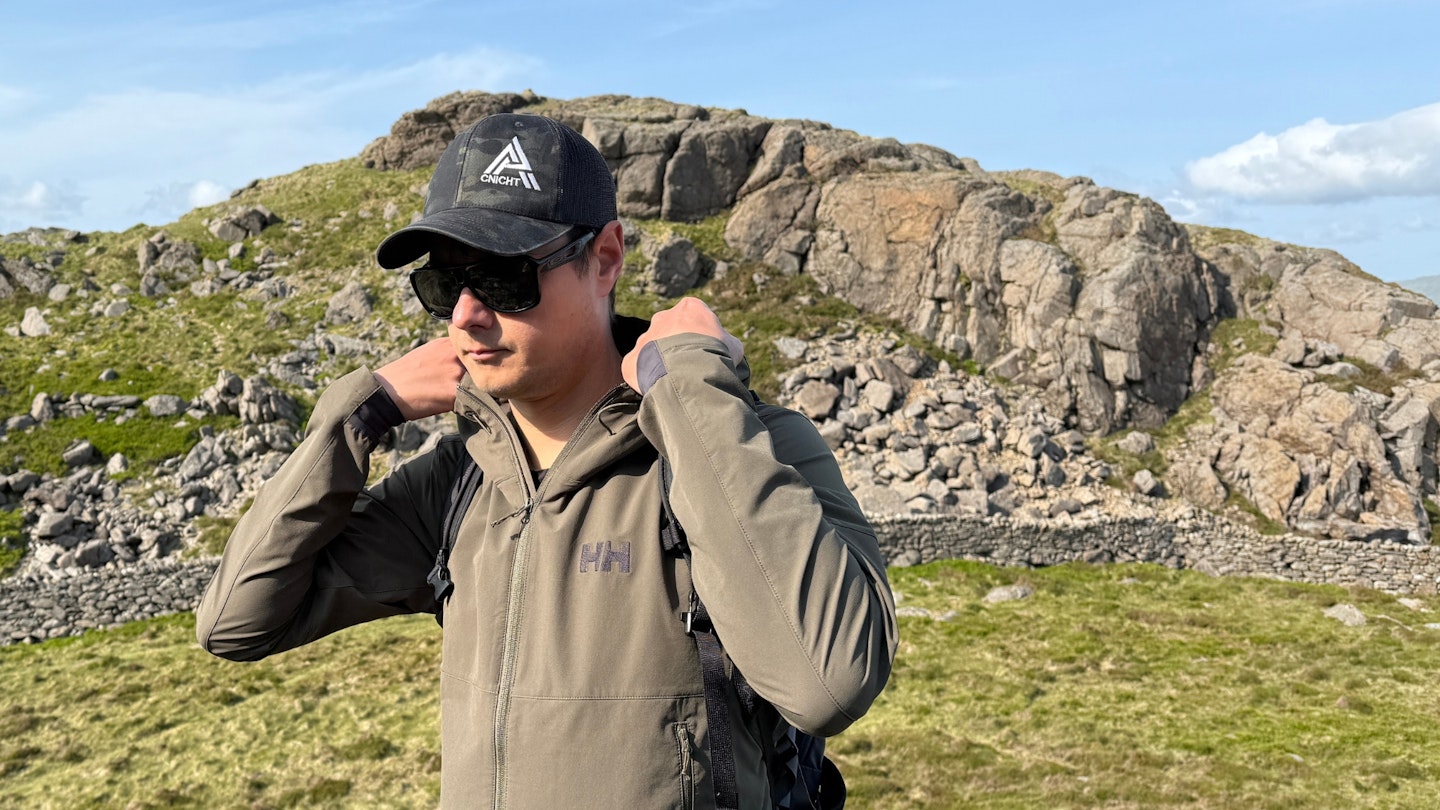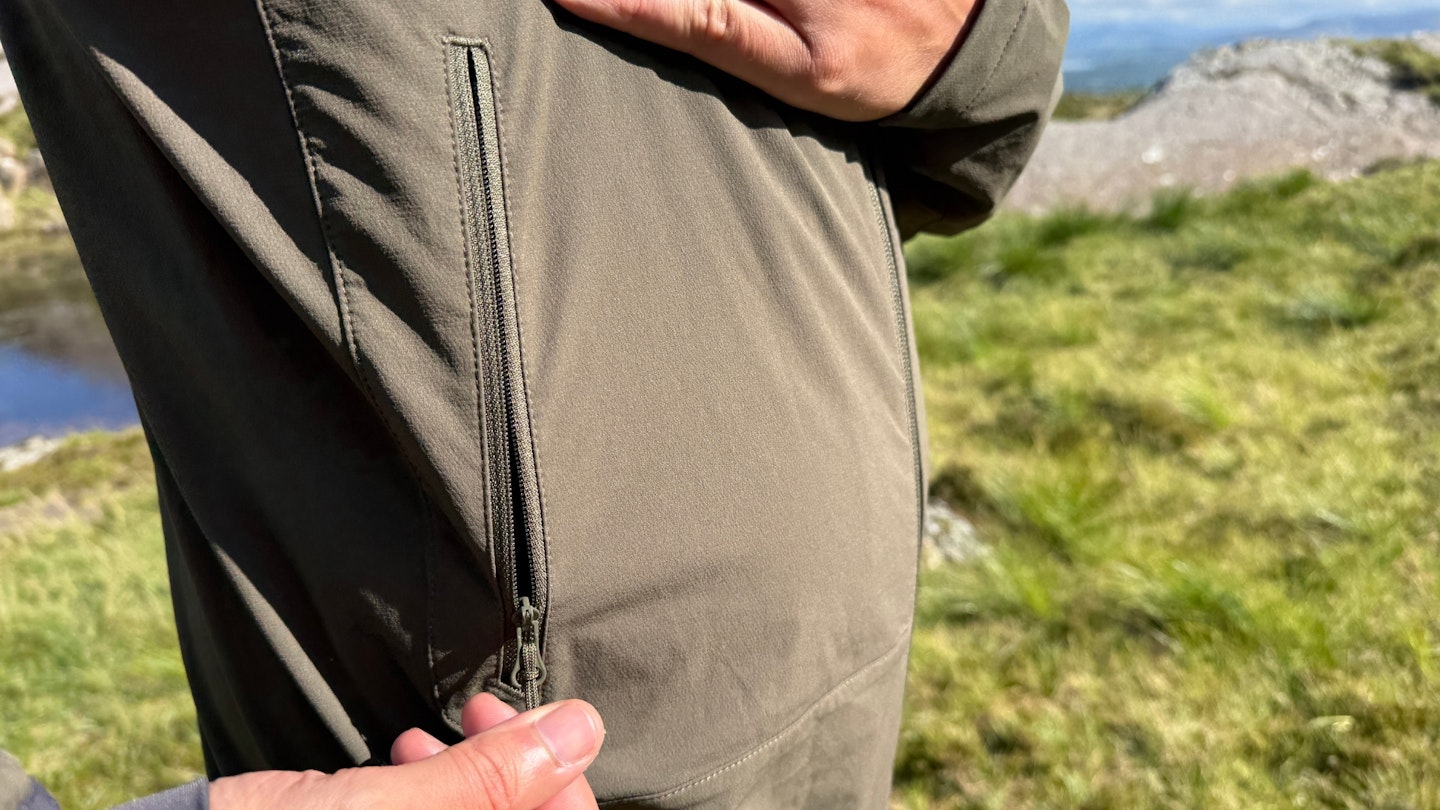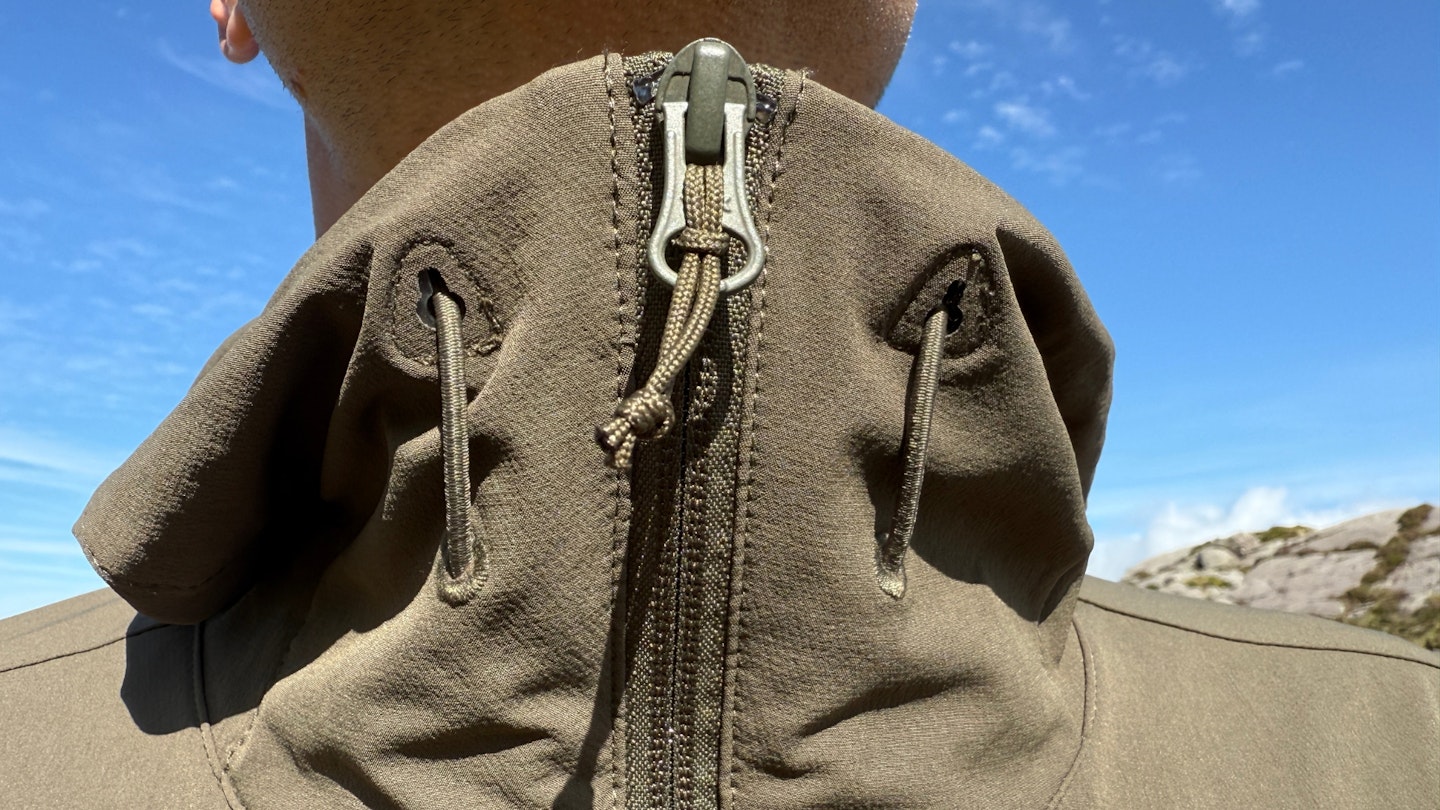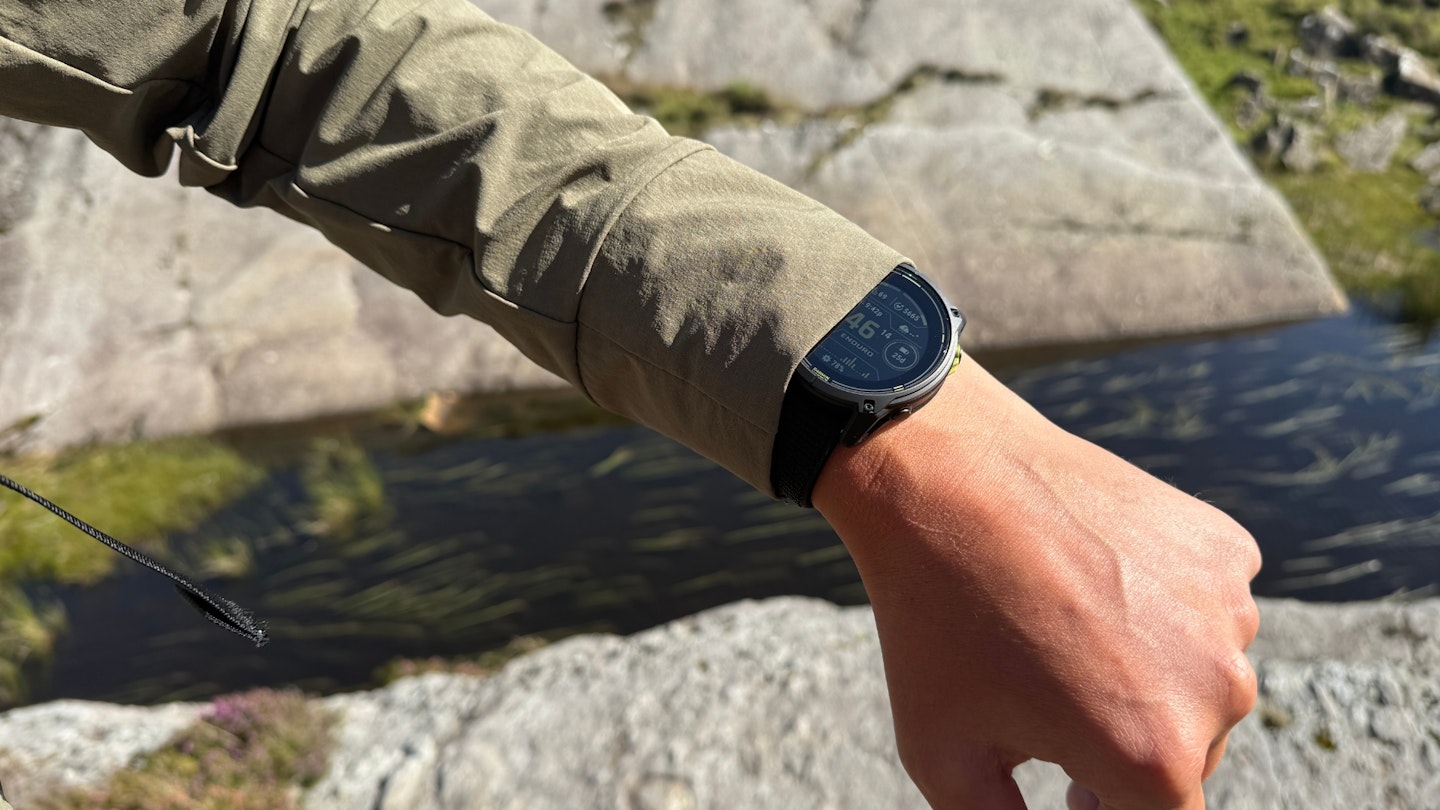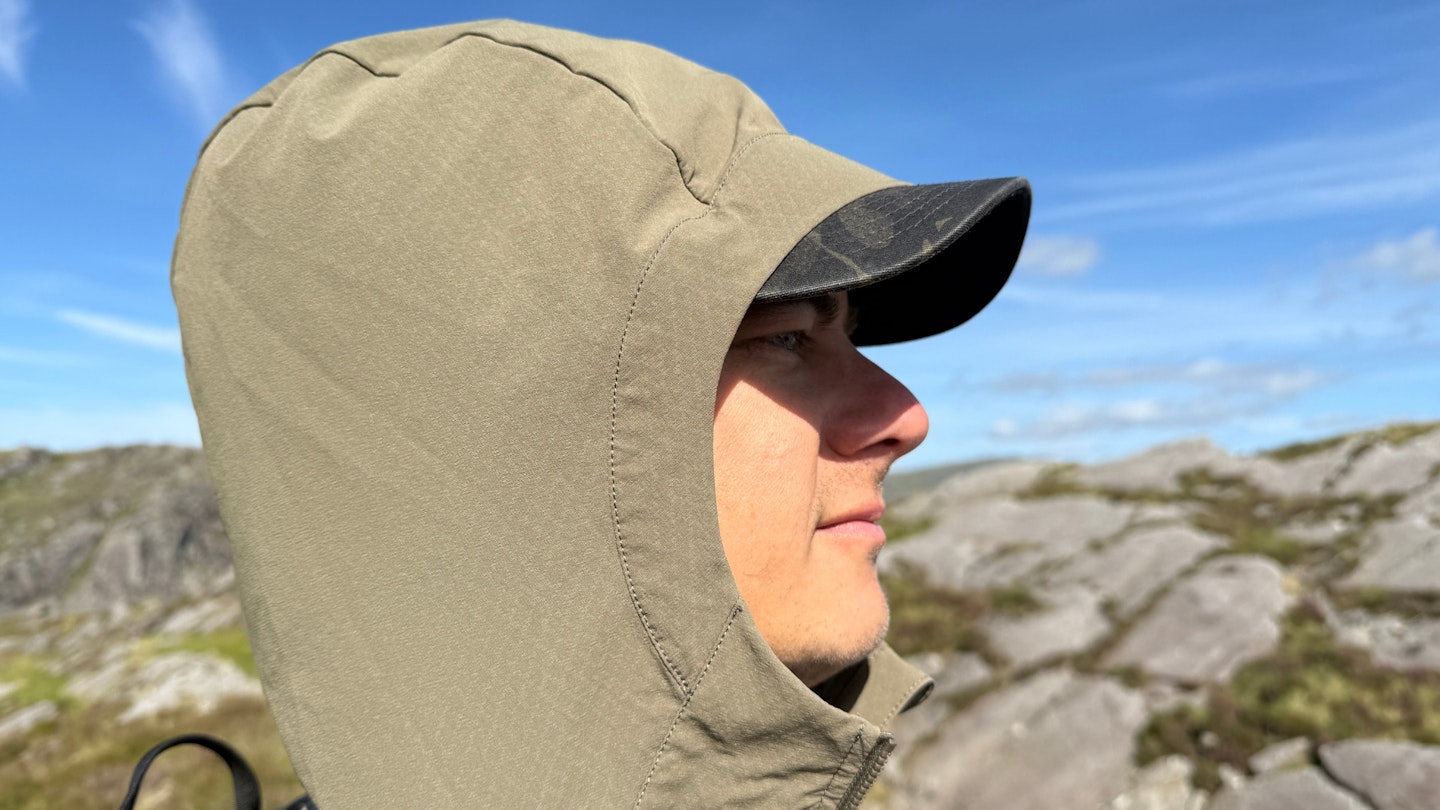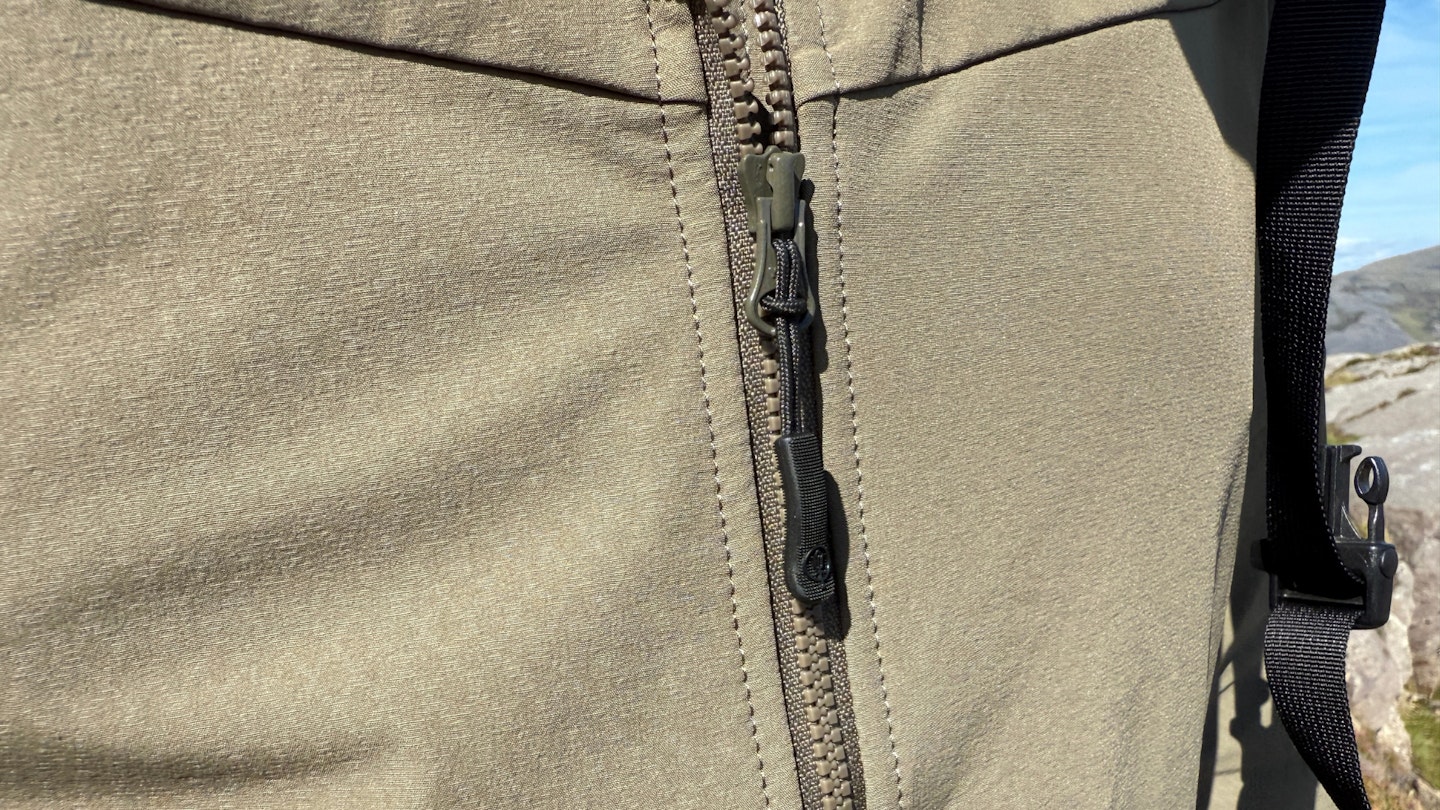What the heck is a softshell hiking jacket? It’s a rather elusive, nebulous clothing concept. You only have to visit the softshell section of brands’ websites for a taste of this uncertainty. Often everything from fleecy windproofs to miscellaneous mid-layers are listed under this catch-all category. It’s a mess, in all honesty. Let’s see if we can unpick it.
While a hardshell jacket is stiff, strong and not that breathable, a softshell is the opposite. It’s softer, smoother, comfier, more stretchy and much better ventilated. But a softshell jacket is more wind- and water-resistant than a fleece jacket. Although it's unsuitable for severe weather, a softshell can protect against light showers and also become an insulating layer underneath a hardshell.
Given the enormous variety of eligible contenders, we've narrowed things down. Here, we’ve chosen to focus on higher-grade, heftier, hooded jackets that work well as standalone outer layers – all reviewed over several months, in mixed conditions.
What are the best softshell jackets of 2025?
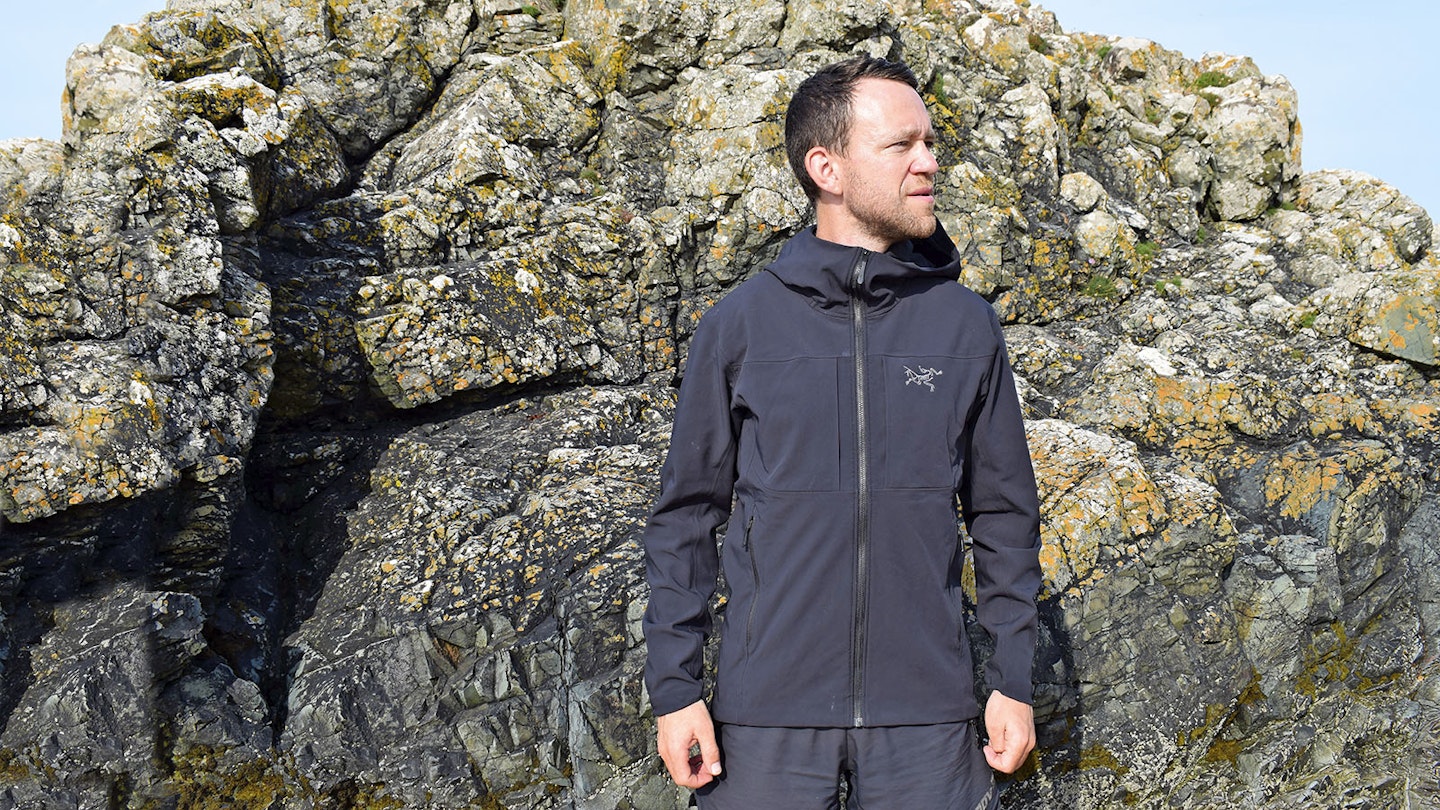
Best softshell overall: Mountain Equipment Aerotherm Jacket
Best value softshell: Rab Borealis Hooded Jacket
Best softshell for versatility: Helly Hansen Blaze Softshell Jacket
Editor's note: this article was updated in July 2025 to include new releases tested by Matt Jones
How we tested the best softshell jackets
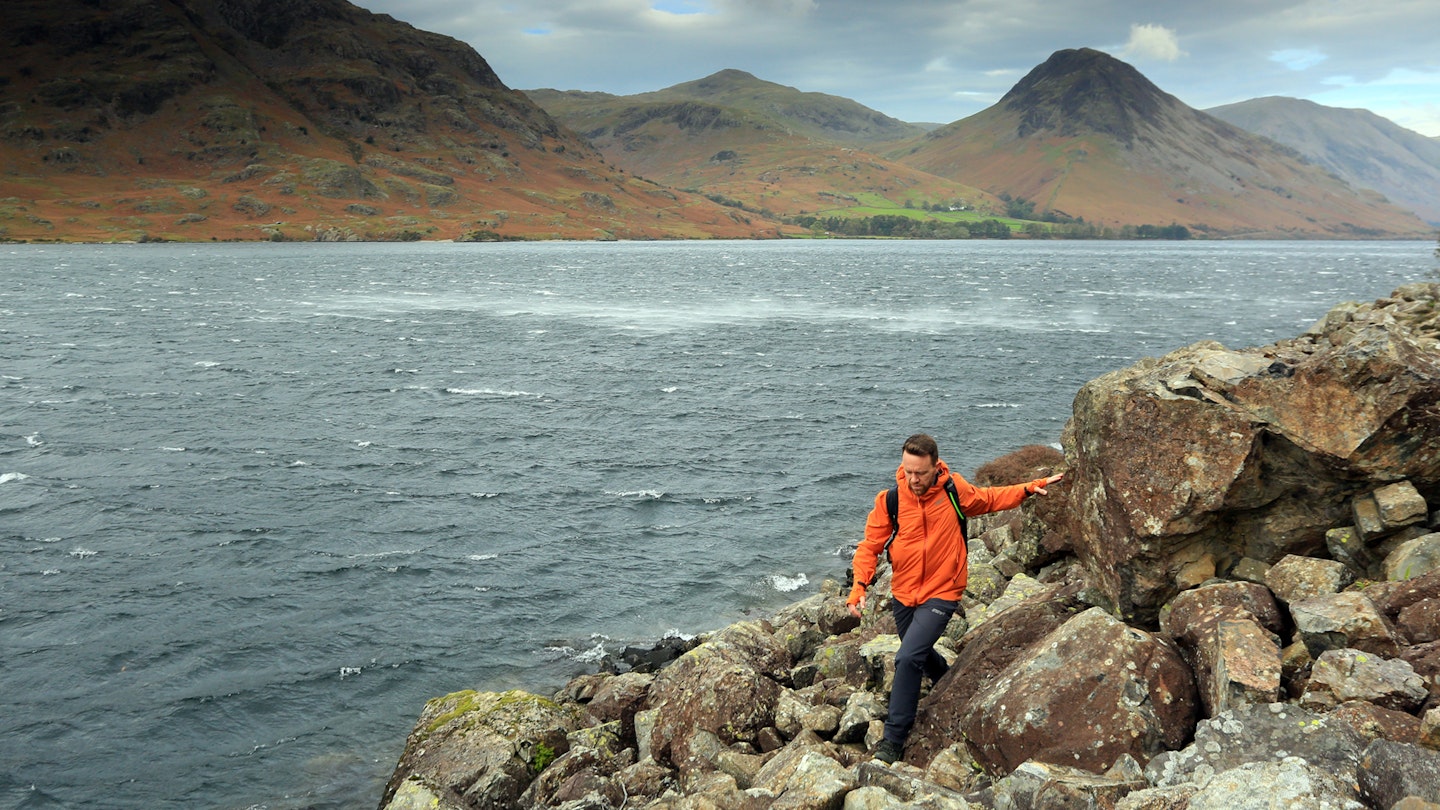
All hiking jackets we test are subject to real-world situations. We don't go to the lab; the brands have done that already. We put their creations up against nature, and our thorough gear testers. This way, we get a true feel for how outdoor gear performs and ultimately, whether it's a wise purchase.
The softshell jackets in this article were tested by gear experts James Forrest (above) and Matt Jones. James lives on the edge of the Lake District and heads into the hills to put each product through its paces. He walks in all seasons, often for mutliple days at a time on long-distance trails, so demands a lot from every piece of outdoor clothing he wears.
Based in Snowdonia, Matt's a vastly experienced gear tester and self-confessed outdoor kit geek. He's been one of our main gear testers for the last couple of years and is the first person we call with any complicated kit queries that need in-depth and forensic analysis.
For more info, including how we get products in for review, check out how we test gear.
Best softshell jackets reviewed:
Designed for mountaineering, alpine climbing, hiking, and running, the Mountain Equipment Aerotherm is a highly technical, ultralight softshell jacket. It features a super-light double weave softshell outer and a micro-grid of fleecy squares inside, providing warmth and weather protection. Its minimalist design weighs only 279g in men's small, making it ideal for gram-saving hikers.
The jacket's outer is Exolite 45 stretch double weave softshell fabric, the lightest double weave fabric globally. The inner micro-grid (100% polyester) offers wicking and temperature regulation. Despite its low weight, the fabric maintains decent toughness, though it lacks the stretch of traditional softshells.
It copes with light showers and wind, but for heavier conditions, pair it with a waterproof shell. The Aerotherm's breathability is exceptional, ensuring comfort during fast-changing conditions. With a snug, athletic cut and articulated, pre-shaped sleeves, the jacket fits well but may require sizing up for some.
Notable features include two fleece-lined handwarmer pockets, a chest pocket, adjustable waist hem, and elasticated wrist cuffs. The main YKK zipper has an internal storm flap and a zipper garage but is one-way. The hood, with an elasticated rim, is adjustable via a rear drawcord. The jacket can be stuffed into the right-hand pocket, creating a compact package with karabiner carry loops for easy access.
Read the full Mountain Equipment Aerotherm review here.
Find the men's version here.
Pros
- Incredibly light
- High-tech design
- Premium materials
Cons
- Expensive
- Minimal stretch
- Outer feels delicate
| Men's sizes: | S-XXL |
| Women's sizes: | 8-16 |
| Weight: | 279g (men’s small) |
| Fabric: | Exolite 45 double weave softshell outer (100% polyamide), fleece inner (100% polyester) |
| RRP: | £200/$250 |
Ideal for high-intensity mountain activities, the Borealis is a lightweight, minimalist jacket. It weighs only 295g (men’s L) and features Rab’s Matrix fabric: a stretchy, single-weave softshell with a flexible fit that won’t restrict your motion.
Rated UPF 50+ with good wind resistance and a PFC-free DWR coating to repel light rain, it’s a great choice for summer and shoulder-season use as an outer layer. However, it’s not designed for harsh weather; instead, the Borealis focuses on ventilation over warmth or full weatherproofing, making it ideal for fair weather adventures.
Where the Borealis excels is in breathability and drying-time, meaning you can wear it all day without needing to take it off. It’s more comfortable than a windproof layer and offers better weather protection than a lightweight fleece. Its cut is slightly shorter to suit climbing, and it keeps features to a minimum: just a snug-fitting hood and two mesh pockets.
With a price tag of £85, it’s more affordable than many competitors. And while it doesn’t have as many features or the warmth of more expensive jackets, the Borealis is excellent for anyone seeking a lightweight, breathable softshell that moves effortlessly with you.
Get the women's version here.
Read our full Rab Borealis review.
Pros
- Ultra-lightweight and highly breathable
- Excellent stretch and mobility
- Quick-drying and soft against the skin
- Great value for money
- Wind-resistant and UPF 50+ sun protection
- Recycled fabrics with fluorocarbon-free DWR
Cons
- Limited water resistance (only light drizzle)
- Minimal insulation
- Shorter cut may not suit everyone
- No hood or cuff adjustment
| RRP: | £85/$120 |
| Men's sizes: | S-XXL |
| Women's sizes: | UK 8-16 |
| Weight: | 295g/9.6oz (men's L) |
| Fabric: | Matrix single weave stretch 130gsm nylon (88% recycled nylon, 12% elastane) with fluorocarbon-free DWR |
The Helly Hansen Blaze clicked with us as a go-anywhere, do-most-things midweight softshell. We put it through its paces on multiple spring and summer romps across Snowdonia – and it performed very well.
The headline here is the jacket’s 4-way stretch double-weave softshell fabric: it’s got a close-yet-relaxed cut and moves brilliantly, with a genuinely soft feel inside and enough beef in the material to shrug off light abrasion.
We also loved the hood: it's properly adjustable, with a stiffened brim that’s much more protective than elastic-bound options. The dropped tail and long sleeves provide proper bum-and-cuff coverage (no annoying ride-up), and the mesh-lined handwarmer pockets double as handy vents on sweaty climbs.
The weather resistance is what you’d expect from a non-membrane softshell: it shrugs off gusts and light showers but won’t keep you dry in a deluge. It’s heavier than most windshirts and a touch less breathable, but the added warmth and durability make it a good pick for all but winter’s worst.
Although the fit is trim, it's quite forgiving, so we think it'd work for a range of body shapes and sizes. And the finish on seams/cuffs is best-in-class at this price. It's not the most technical piece, but up there among the best for all-day, three-season use.
Get the women’s version here.
Read our full Helly Hansen Blaze Softshell review.
Pros
- Excellent stretch and comfort
- Recycled content and bluesign-approved fabric
- Solid weather resistance for a non-membrane softshell
- Well-fitted hood with face adjustment and peaked brim
- Great fit with good coverage
Cons
- Heavier than some rivals
- Not cut as technically as some climbing-orientated jackets
- Lacks the waterproof performance of membrane-backed softshells
- Less breathable than ultralight windshirts
| RRP: | £130/$160 |
| Men's sizes: | S-2XL |
| Women's sizes: | XS-XL |
| Weight: | 440g/15.5oz (men's L) |
| Fabric: | 4-way double-weave stretch fabric (47% Recycled Polyamide, 41% Virgin Polyamide, 12% Elastane) with PFC-free DWR |
If you like the sound of a softshell that's as comfortable as a fleece, but more stretchy and weather-resistant, look no further. We’ve used the Arrow Hooded Jacket for everything from scrambles to shoulder-season hillwalks and it rarely stays in the cupboard for long. It’s warm enough for chilly starts, breathable enough for long days and it's versatile enough to be your go-to softshell in most conditions.
What stands out is the fabric. Mountain Equipment’s double-weave softshell has a lofted grid inner that’s soft and warm against the skin, paired with a smooth, weather-shedding face. At 380g (men’s L), it’s light enough to wear all day. And with a good bit of stretch plus long sleeves, it moves really well – climbers in particular will appreciate that freedom. It's worth noting that the fit is trim and technical, so some users might prefer to size up for general use.
The weather resistance is decent, though it’ll wet out in heavy rain (as softshells do). But in classic “four seasons in a day” Welsh weather, we barely took it off. It layers easily under a waterproof and even rivals a 100-weight fleece in warmth. The hood is close-fitting and helmet-compatible, the cuffs stretch snugly over the wrists, and there are three well-placed pockets for stashing essentials. It's an excellent all-rounder.
Find the women's version here.
Read our full Mountain Equipment Arrow Hooded Jacket review here.
Pros
- Very comfortable, soft lofted inner
- High stretch for great freedom of movement
- Breathable enough for all-day wear
- Versatile for both climbing and general outdoor use
- Good value
Cons
- Less abrasion-resistant than nylon-based softshells
- Cuffs and hood lack full adjustability
- Slightly short in the body for some users
- Slim fit may require sizing up for non-climbers
| RRP: | £100/$150 |
| Men's sizes: | S-XXL |
| Women's sizes: | UK 8-16 |
| Weight: | 380g/13.4oz (men's L) |
| Fabric: | 182gsm double weave fabric with lofted inner face (90% polyester, 10% elastane) with fluorocarbon-free DWR |
Here’s a jacket that genuinely splits the difference between hardshell-level protection and softshell comfort. We put the Berghaus Ridge Roamer through its paces from everything from stubborn drizzle to full-on mountain squalls, and it shrugged off the lot.
It's all down to a three-layer, four-way stretch fabric with a bonded PU membrane and taped seams. This means that the Ridge Roamer is functionally waterproof, shedding rain and wind like a true shell (it works great as a windbreaker), but it's more pleasant to wear than any stiff hardshell.
There's a few gripes to get out of the way. Breathability (while better than most hard shells) is still limited when you’re slogging uphill – pit zips would have been a welcome addition. We also found the cuffs problematic, as they're massive, with zero adjustment. That aside, the well-placed pockets, tough laminated zips and an adjustable hood all hit the mark.
It's a pricey beast, but if you find it on offer, you’re getting an impressively protective softshell for notoriously wet and windy outings – provided you can live with the cuffs.
Check out the men's version.
Read our full Berghaus Ridge Roamer review.
Pros
- Excellent wind and water resistance
- Taped seams and PU membrane for serious protection
- Stretchy and comfortable fit
- Lightweight for a 3-layer softshell
- High-spec features (laminated zips, adjustable hood, good pocket layout)
Cons
- Very expensive at full price
- Poor cuff design with no adjustment
- Less breathable than lighter or simpler softshell rivals
- Arguably overbuilt for casual or mild-weather use
| RRP: | £270 / $365 |
| Men's sizes: | XS-3XL |
| Women's sizes: | UK 8-20 |
| Weight: | 420g / 14.8oz (men's L) |
| Fabric: | 4-way stretch 100% Polyester With Polyurethane Membrane / Pocket Lining: 85% Polyamide / 15% Elastane |
On test, we found that the Velez Windproof lives up to its name: it blocks wind effectively. It also provides good protection in light rain, thanks to a Nikwax-based water-repellent finish that's simple to refresh using the brand’s own aftercare products.
With full-coverage, two large mesh-lined pockets and zippered forearm vents, the Velez Windproof brings extra features compared to most windshirts, yet only weighs 230g in a men’s large. However, it lacks a hood and hem drawcord, which can lead to some flapping in strong winds.
It's fairly good value, though adding the suggested Velez Grid fleece brings the total to £215 (or £200 if both are purchased together). We find that the pair work well as a warm and breathable system suitable for the UK’s shifting weather, and together they remain under 500g.
While not as stretchy as some softshells, the Velez Windproof is a lightweight, packable and practical layer. We'd say it's best for anyone who prefers to not have to change layers often, who doesn't need their jacket to be stretchy or close-fitting.
Check out the men's version here.
Read our full Paramo Velez Windproof Jacket review here.
Pros
- Lightweight and packable
- Good breathability
- Excellent wind resistance
- Solid water resistance for a single-layer, non-membrane jacket
- High collar and full-coverage fit feels surprisingly protective
- Well-thought out features, such as roomy pockets and clever forearm venting
- Ethical and sustainable manufacturing
Cons
- Polyester fabric has no in-built stretch, unlike a softshell
- Baggy hem, which lacks drawcord adjustment
- No hood
- Works best in combination with a gridded fleece rather than as a standalone layer
| RRP: | £125 |
| Men's sizes: | S-XXL |
| Women's sizes: | XS-XL |
| Weight: | 230g / 8.11oz (men's L) |
| Fabric: | Nikwax Duology Windproof (100% recycled polyester) |
The Alpkit Resolute offers excellent value. It's a classically styled, traditional softshell. It’s made from a hefty 207gsm double weave softshell material, which is 92% nylon and 8% elastane. This extra weight ensures that the Resolute feels warm and sturdy.
The 8% elastane content provides excellent stretch and flexibility, enhancing comfort and ensuring the jacket feels athletic and streamlined despite its robust fabric. The interior feels soft against the skin, and the excellent stretch gives good freedom of movement. Weighing 535g (men’s small), it’s mid-range in weight, and feels lighter and more agile than the raw stats suggest.
Wind resistance is good, cutting out the worst of a wind’s chilling effect, while a PFC-free DWR coating ensures water beads on the jacket. It protected me adequately in blustery conditions and light drizzle. Breathability is okay, but it can get hot on steep climbs, although the free-flowing central zipper has a two-way design for extra ventilation.
For the price, the Alpkit Resolute is fully featured with adjustable wrist cuffs, cinchable waist hem, and many mesh-lined pockets. The hood fits well, with a wired peak visor and three adjustment points, and can be rolled away with a Velcro-style tab.
Read the full Alpkit Resolute Softshell review.
Find the men's version here.
Pros
- Affordable
- Fully-featured
- Excellent stretch
- Comfortable
- Good size ranges
Cons
- Slightly on the heavy side
| Men's sizes | XS-XXL |
| Women's sizes | 6-20 |
| Weight | 535g (men's small) |
| Fabric | 207gsm double weave with sanded back (92% nylon, 8% spandex) |
| RRP: | £120/$170 |
This premium, ultralight jacket features a standout design. Unlike classic softshells, the Vapour-Rise Summit uses a 20-denier Pertex Quantum Air fabric with a 47gsm grade and PFC-free DWR treatment for the outer. This prioritises breathability over wind resistance, meaning it excels in dynamic mountain activities.
The thick, fleecy, brushed polyester Vapour-Rise Warm lining provides noticeable warmth but can feel hot in some scenarios. This two-layer system is intended to replace the need for separate garments, creating a micro-climate for all-day comfort – Rab describes the Vapour-Rise system as "soft on the inside and protective on the outside, warm, wicking, and wind-resistant" with "efficient temperature regulation."
The Vapour-Rise Summit has an athletic cut, fitting snugly and true to size but may be tight for some. It works well as both an outer layer and within a layering system. Comfort is high due to the soft inner and lightweight build. Weighing 323g in men's small, it is ultralight compared to classic softshells.
The jacket includes adjustable wrist cuffs, two high zippered handwarmer pockets, a chest pocket, adjustable waist hem, and a helmet-compatible hood with a wired peak. The main zipper has an internal storm flap, a fleece-lined chin guard, and is two-way for extra ventilation. All zippers are premium YKK.
**Check out our full Vapour-Rise Summit review here.
**
Find the women's version here.
Pros
- High-tech design
- Premium materials
- Good warmth
- Excellent breathability
Cons
- Expensive
- Too warm
- No stretch
- Outer feels delicate
- Only wind-resistant (not windproof)
| Men’s sizes: | S-XXL |
| Women’s sizes: | 8-16 |
| Weight: | 323g (men’s small) |
| Fabric: | 20-denier, 47gsm Pertex Quantum Air outer (100% polyamide); fleece inner (100% polyester) |
We put the Thrudark Veles through its paces scrambling and hiking across rocky Welsh trails, and after weeks of use it still looked and performed like new, shrugging off abrasion much better than most rivals we’ve tested.
The four-way stretch fabric, loaded with nylon and graphene-enhanced polyester, is stretchy yet strong. The diamond-grid lining on the inside adds a bit of comfort and moisture control, while the double-weave construction does a solid job of keeping out wind.
We stayed protected in breezy, damp spring or autumn weather – just don’t mistake the DWR coating for full waterproofing. If it buckets it down, you’ll want a shell handy, but for most conditions you’re covered.
Some minor gripes include the lack of hood and the fact you can't adjust the sleeve cuffs and hem. There's also some heavy-handed branding, including military-style insignia patches on both shoulders – not to everyone's taste.
Fit is a highlight here: the cut is athletic and technical, with generous arm and torso length, and it layers cleanly under harnesses or backpacks. That said, it’s trim through the waist – ideal for rangier or athletic builds, but those who prefer a relaxed fit may find it a little snug.
Overall, the Thrudark Veles is a good bet if you're after a durable softshell for three-season use, especially for technical day hikes, scrambles or backpacking adventures.
Read our full Thrudark Veles review.
Pros
- Excellent stretch and comfort
- Durable and abrasion-resistant fabric
- Trim, technical fit with good coverage and articulation
- Great wind and light rain protection
- Versatile across seasons
- Mesh-lined hand pockets double as vents
Cons
- No hem, cuff or hood adjustability
- Sizing may be snug for broader builds
- Branding is a bit heavy-handed
- Not suitable for full winter or torrential rain
- No women’s version
| RRP: | £165/$228 |
| Men's sizes: | XS-3XL |
| Women's sizes: | N/A |
| Weight: | 410g/14.4oz (men's L) |
| Fabric: | 4-way stretch softshell with grid backer (74% nylon, 13.5% polyester graphene, 12.5% spandex) |
On first impressions, this jacket appears simplistic with a minimalist style and basic features. However, it excels in the mountains with its super-comfy, wind-resistant, and water-resistant design.
Its unique selling point is the super-stretchy fabric. It is made from a 196gsm stretch-woven softshell fabric called Durastretch Bamboo, consisting of 64% recycled polyamide, 26% polyester, and 10% elastane. The name refers to carbonised bamboo on the fabric backer, adding anti-microbial protection and increasing moisture wicking. The jacket's fabric is PFC-free and treated with a DWR.
During test hikes, the fabric was light, comfy, and super-stretchy, providing good freedom of movement. The waist hem doesn’t lift thanks to Salewa’s “free motion patterning” design. The DWR-treated outer copes well with light drizzle and wind, but a hard shell is needed for heavier rain.
The Agner Durastretch has a very athletic cut, slim fitting and figure-hugging.
Size up for a better fit. It is a stripped-back, no-frills softshell with two zippered handwarmer pockets, a small valuables pocket, adjustable waist hem, and a snug pre-shaped hood. It lacks adjustable wrist cuffs, internal pockets, and a storm flap on the main zipper. So, it’s significantly lighter than many classic softshells. The design suits scramblers, climbers, and hillwalkers too.
Read our full Salewa Agner Durastretch review here.
Find the women's version here.
Pros
- Comfortable
- Super-stretchy
- Lightweight
Cons
- Expensive
- Some features missing
- Athletic fit won’t suit all body shapes
| Men’s sizes: | S-XXL |
| Women’s sizes: | 6-14 |
| Weight: | 398g (men’s small) |
| Fabric: | 196gsm Durastretch bamboo (64% recycled polyamide, 26% polyester, 10% elastane) |
| RRP: | 165 |
This hybrid jacket combines the warmth of fleece with the weather protection of a softshell. It's ideal for cold weather hikes, offering durability and toughness, though it may feel too heavy and warm for some.
The jacket is made from Keela’s AirXtream fabric, a blend of 80% polyester, 15% PU, and 5% elastane. The robust outer layer and fleece-like inner, with a gridded texture, provide warmth and weather protection, trapping air for insulation and wicking away moisture. A PFC-free DWR coating boosts water resistance and windproofing. It handles light rain well but isn't suited to downpours.
Weighing 527g, the Hydron is mid-weight with a standard fit, good comfort, and decent articulation.
The gridded interior may feel coarser than some prefer but, overall, the Hydron is durable and protective. Key features include an adjustable hood with a wired peak, Velcro-adjustable wrist cuffs, four external pockets, and waist hem adjustment. The pockets are fleece-lined, and the hood can be rolled away. The central zipper is backed by a storm flap and has a zipper garage at the top. Twin side vents help regulate temperature.
Check out our Keela Hydron review here.
Find the men's version here.
Pros
- Warmth
- Weather protection
- Durability
Cons
- Not the stretchiest
- Fits a little boxy
| Men’s sizes: | XS-XXXL |
| Women’s sizes: | XS-XL |
| Weight: | 527g (men’s small) |
| Fabric: | AirXtream outer (80% polyester, 15% PU, 5% elastane), Matrix inner (100% polyamide) |
| RRP: | £149.95 |
What to look for in a softshell jacket
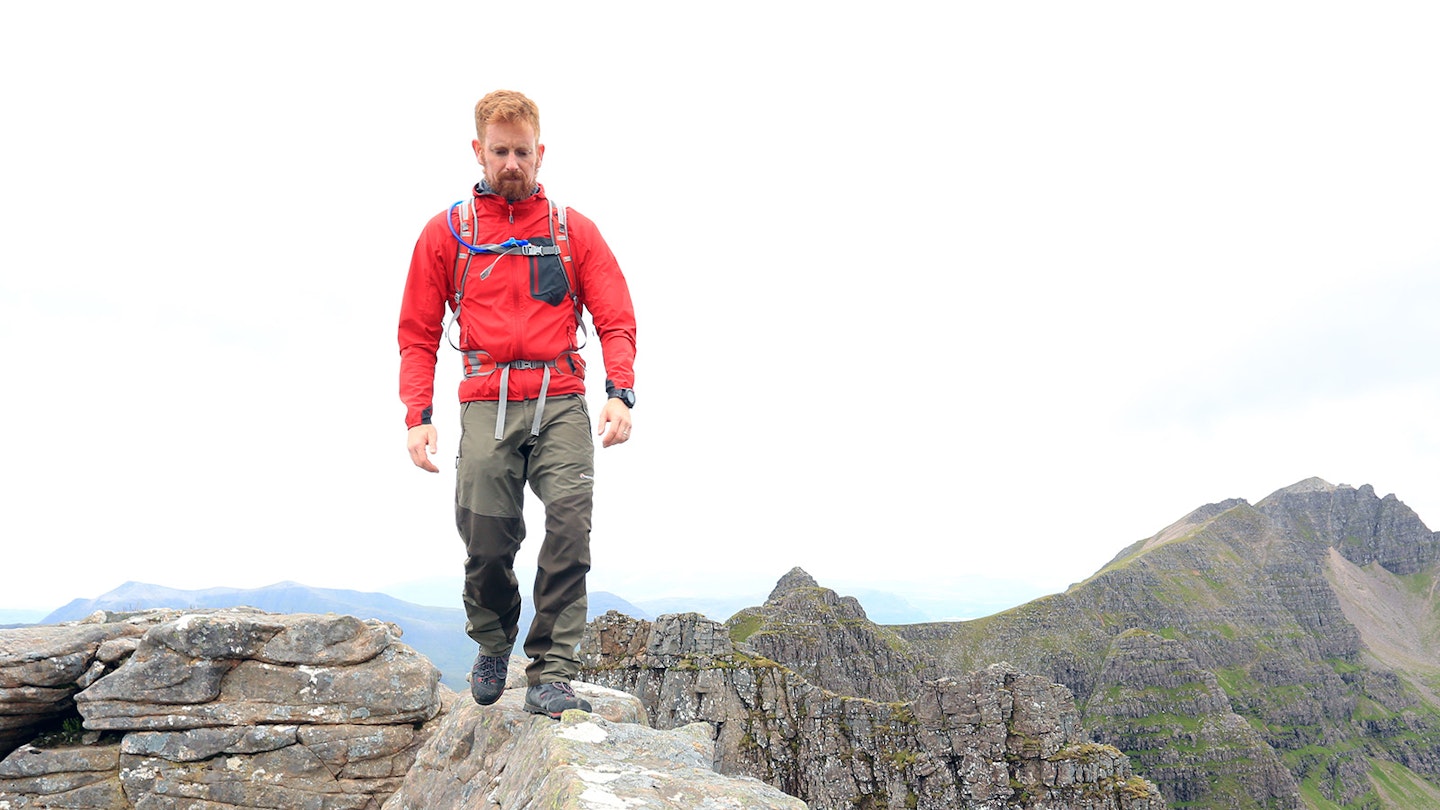
Water resistance: Softshells are generally water-resistant or ‘weatherproof’ rather than fully waterproof, relying on densely woven outer fabric and a durable water repellent (DWR) treatment to offer light to moderate water-resistance.
Wind resistance: This is the major benefit of softshell over fleece. Wind-resistance is often measured by CC or CFM. The higher the number, the less resistant the fabric is to wind. A lightweight fleece typically measures about 60 CFM, while most softshells are rated between 10 and 5 CFM.
Hood: Although it’s ultimately a matter of personal preference, a hood is generally a useful addition, but think about whether you’ll want it to fit comfortably under a hard shell. Technical softshell jackets often have peaked and/or helmet-compatible hoods, with adjustment so they can be cinched in tight.
Fabrics: Single layer softshells are more breathable thanks to the use of a double-weave wicking fabric. Two-layer softshells offer increased warmth and water-resistance as well as windproofing.
Breathability: This refers to how much moisture vapour can pass through a fabric. Softshells are far more breathable than even the best hard shells, making them ideal for sustained active use in the hills when you need a good level of weather protection but not a full-on waterproof.
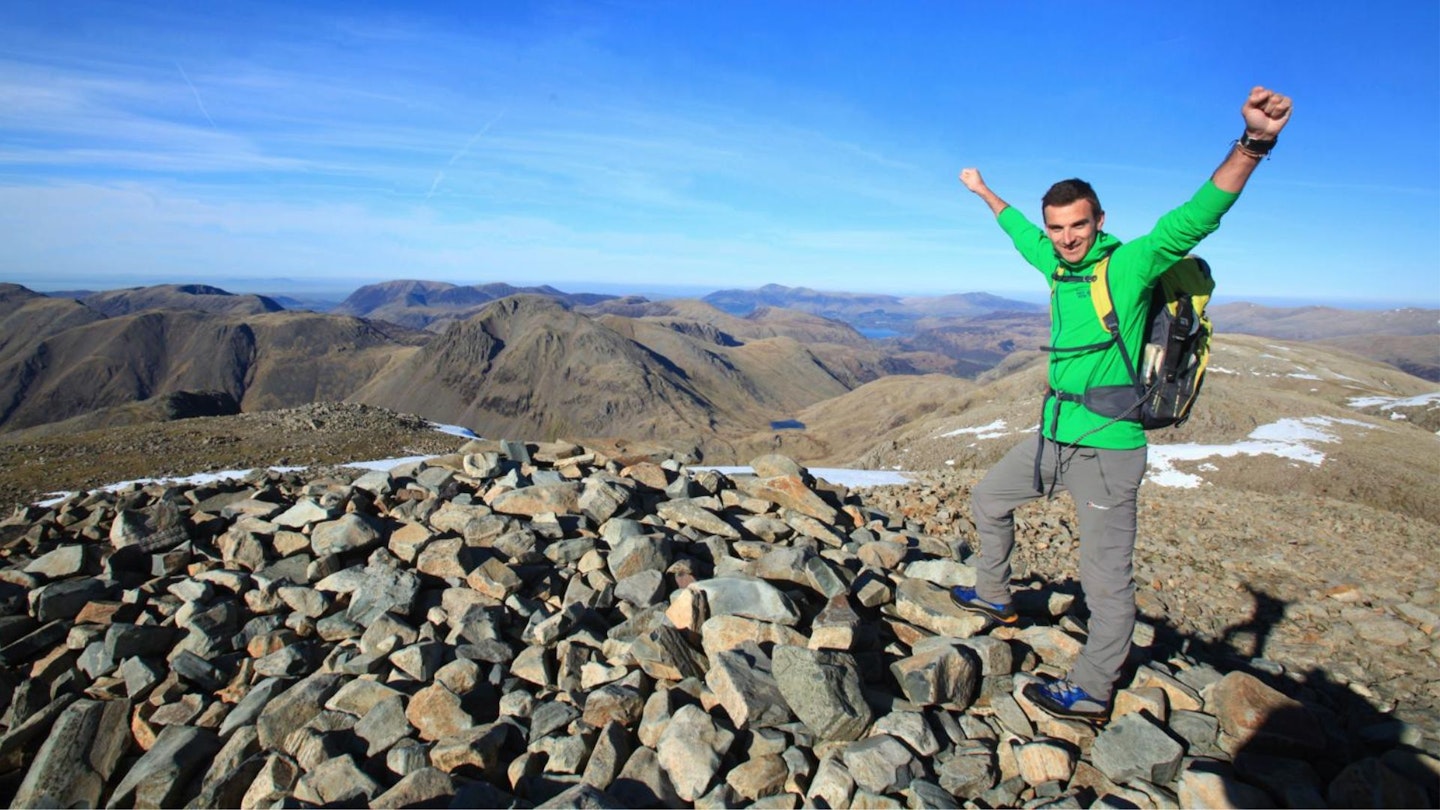
Stretch: Many softshell fabrics incorporate elastane (also called spandex or Lycra) for enhanced freedom of movement. Two-way stretch fabrics stretch either vertically or horizontally. Four-way stretch fabrics stretch in both directions.
Weight and packed size: Softshells are often regarded as wear-all-day layers, which makes these factors less important – though overall weight and bulk are still considerations.
Pockets: Large pockets are great for storage. Napoleon-style pockets are placed in the centre of the jacket, next to the main zip, for easy access. Other jackets have side hand pockets, which are usually placed higher than normal so they can be used even if you’re wearing a rucksack.
Ventilation: Even the most breathable jackets can still get warm, so ventilation is vital. Some jackets feature pit zips or mesh-lined pockets, which can be opened to increase airflow. Wide cuffs that can be pushed up the forearm can also aid cooling.
Fit: Softshells tend to have a slimmer cut compared to hardshell jackets. But you should still ensure that they don’t feel tight across the shoulders or chest and that sleeves cover your wrists fully.
About the author
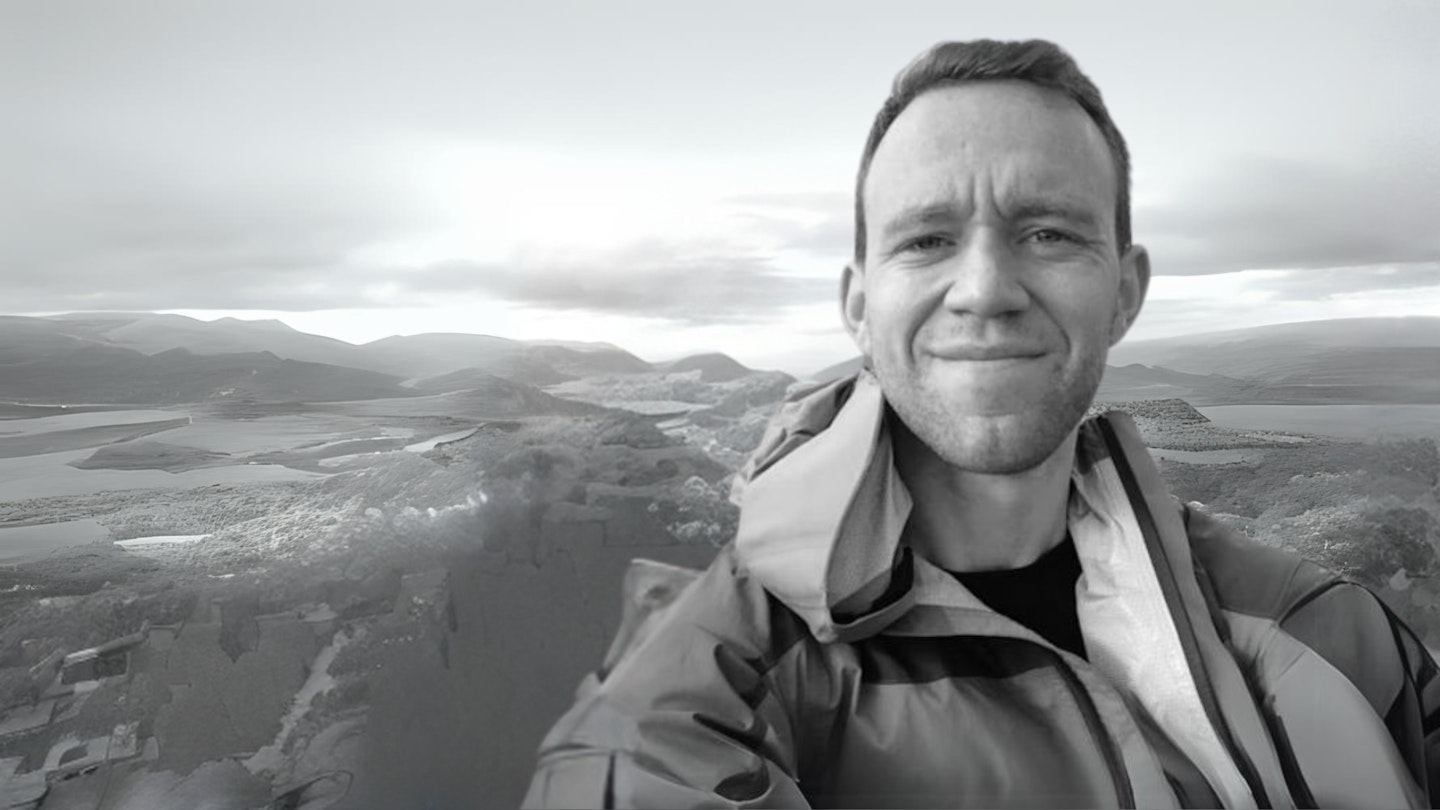
James Forrest is a prolific peak bagger and long-distance walker who’s one of the most high-profile outdoor writers in the UK. He writes regular features and route guides for Trail and LFTO, and has been one of our main gear testers for the last few years. James is based on the edge of the Lake District so when he isn’t off on his latest crazy adventure or challenge, he’s walking in his local fells.

























